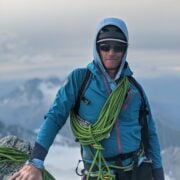Things to Do in Canada for Outdoor Adventurers
Canada epitomizes the word “massive”. With nearly 2 billion acres of wilderness encircled by colossal mountain ranges to the East and West and an endless permafrost northward, the adventurous things to do are as boundless as the land itself—there’s always a trail you haven’t explored, a slope you haven’t skied, or a peak you haven’t conquered!



Recommended by locals

Hiking in Canada for Breathtaking Nature
The world’s second biggest country may just be number one for hiking! Up north the hikes are as varied and iconic as the U.S.’, minus the overbearing crowds (though you might find it overmoosed). Between dense coastal rainforests, panoramic mountainous lookouts and colorful lakeside parklands, you won’t leave these trails disappointed.
Guide’s Choice

Backcountry Skiing in Canada: It Doesn’t Get More “Off-Piste” Than This
Canada is called the Great White North for a reason: the season is long, the weather is perfect, and millions of acres of feathery pow are waiting to be skied. Thanks to nearly 300 ski resorts, you’re never too far from a great slope, in or out of bounds.
Guide’s Choice

Mountain Biking in Canada for Unparalleled Trails
A passionate community + some of the biggest downhill bike parks in North America = world-class reputation. Whether you’re chasing thrills on Whistler’s adrenaline-fueled singletracks or testing your mettle on Squamish’s tricky technicals, you’re in for some of the finest riding in this hemisphere, whichever way you slice it.
Guide’s Choice

Rock Climbing in Canada for Big Time Thrills
The Great White North offers big choices. Between coastal bouldering in Nova Scotia to the legendary Rockies out west you’ll find a whopping 16,000+ routes across the country. Ready to go all in with massive multi-pitches, high-altitude pebble wrestling, and ascents up secluded waterfalls?
















